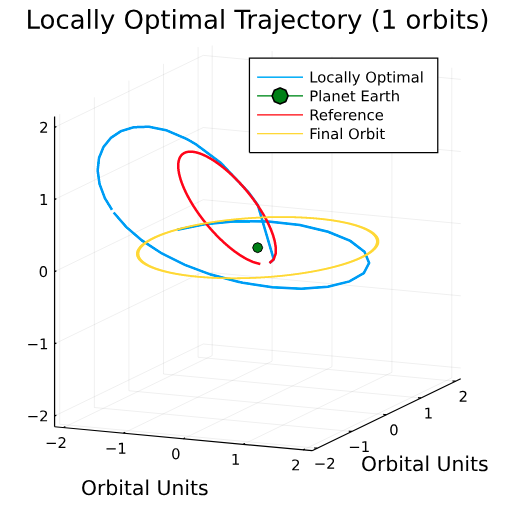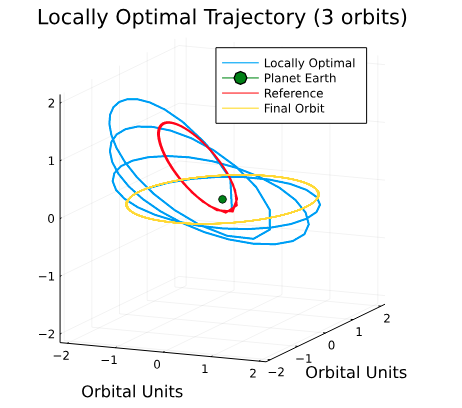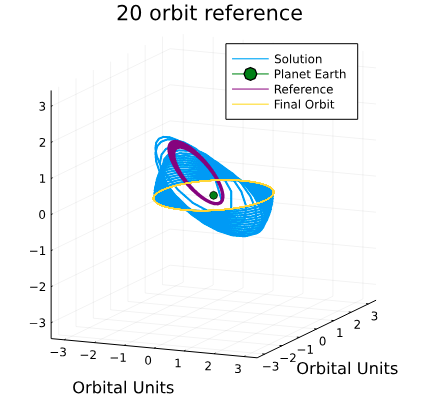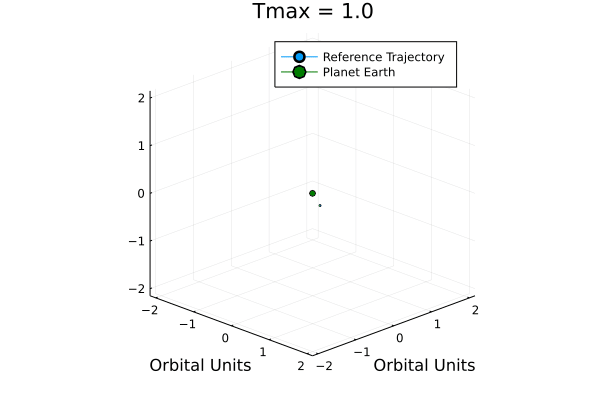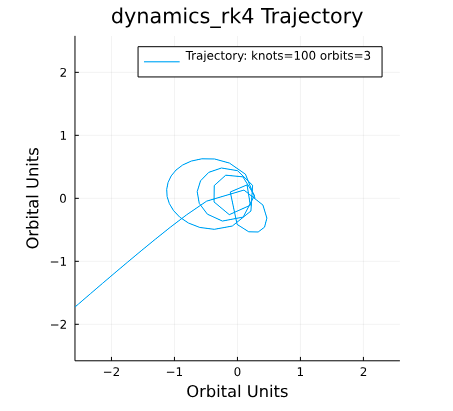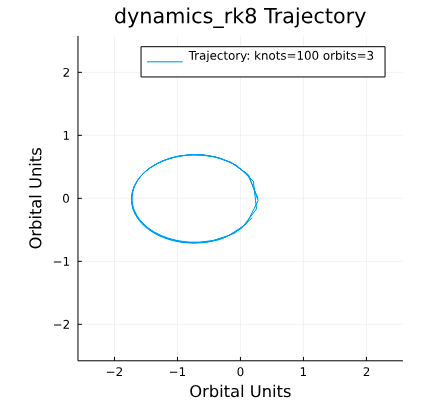Authors: Mitchell Fogelson, Alex Withers, Justin Morris
Date: 05-17-21
License: MIT
'Satellite Trajectory Optimization.ipynb'
This project was a final project completed as part of the 2021 Spring Semester of 16-745: Optimal Control for Robotics at Carnegie Mellon Unviersity.
In this repo we implement a solution to the control optimization problem of a satellite maneuvering from a Geo-Transition Orbit to a Geo-Stationary Orbit. We formulate the problem as a free final time optimization problem with the following assumptions and approximations. We model our satellite as a point model using Keplerian Dynamics. We implement inequality constraints on the maximum thrust for these maneuvers, based on a simplified Ion-Thruster model. We implemented higher order explicit integration (RK4,RK8) methods.
$$ \ddot{r} = F = \frac{-\mu}{\norm{r}^3}*r+u \ x = [r, \dot{r}] \ \norm{u} \le Tmax $$ with the following model parameters:
-
$\mu$ : Gravitational Parameter = 63781 -
$r$ : distance to earth center -
$u$ : control of ion thruster
\begin{equation} \text{minimize} \sum_{k=1}^{N-1} (||u_k||^2 + (r_k-\bar{r})^2 + \frac{1}{r_k} * h_k) + (r_N-\bar{r})^2+(\dot{r}N-\bar{\dot{r}})^2 \ x_1=x{init} \ r_N = \bar{r} \ \dot{r_N} = \bar{\dot{r}} \ x_N \cdot \dot{x}N = 0 \ f(x_k, u_k) = x{k+1} \forall k \ 0\leq||u_k||\leq T_{max} \forall k \ h_{min}\leq h_k \leq h_{max} \forall k \end{equation}
- Julia >=1.53
- ForwardDiff
- Test
- RobotDynamics
- LinearAlgebra
- StaticArrays
- SparseArrays
- Plots
- Ipopt
- MathOptInterface
- TrajOptPlots
- JLD
- MathOptInterface
- Printf
